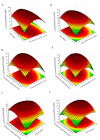Setup of an Ultrasonic-Assisted Extraction to Obtain High Phenolic Recovery in Crataegus monogyna Leaves
- PMID: 34361687
- PMCID: PMC8347228
- DOI: 10.3390/molecules26154536
Setup of an Ultrasonic-Assisted Extraction to Obtain High Phenolic Recovery in Crataegus monogyna Leaves
Abstract
Hawthorn leaves are a rich source of phenolic compounds that possess beneficial activities for human health. Ultrasonic-assisted extraction (UAE) is an extraction technique frequently used for the isolation of phenolic compounds in plants. Thus, in this study, a Box-Behnken design was used to optimize UAE conditions such as the percentage of acetone, the extraction time and solvent-to-solid ratio (v/w) in order to obtain the maximum content of total compounds by Folin-Ciocalteu and the maximum in vitro antioxidant activity by DPPH, ABTS and FRAP assays in Crataegus monogyna leaves. The optimum conditions to obtain the highest total phenolic content and antioxidant activities were 50% acetone, 55 min and 1/1000 (w/v). A total of 30 phenolic compounds were identified and quantified in C. monogyna leaf extract obtained at these optimum UAE conditions. HPLC-MS allows the identification and quantification of 19 phenolic compounds and NP-HPLC-FLD analyses showed the presence of 11 proanthocyanidins. According to the results, the most concentrated phenolic compounds in C. monogyna leaf extract obtained at optimum UAE conditions were phenolic acid derivatives such as protocatechuic acid-glucoside, dihydroxy benzoic acid pentoside and chlorogenic acid, flavones such as 2″-O-rhamnosyl-C-hexosyl-apigenin, flavonols such as hyperoside and isoquercetin and proanthocyanidins such as monomer and dimer. As a result, the optimized UAE conditions could be used to obtain an extract of C. monogyna leaves enriched with phenolic compounds.
Keywords: Box–Behnken design; HPLC-ESI-TOF-MS; HPLC-FLD; Hawthorn (Crataegus monogyna); ultrasonic-assisted extraction.
Conflict of interest statement
The authors declare no conflict of interest.
Figures


References
-
- Ferioli F., Giambanelli E., D’Antuono L.F. Application of different analytical methods for the determination of phenolics and antioxidant activity in hawthorn (Crataegus spp.) bud and sprout herbal extracts. J. Appl. Bot. Food Qual. 2020;93:1–10.
-
- Elsadig Karar M.G., Kuhnert N. UPLC-ESI-Q-TOF-MS/MS Characterization of Phenolics from Crataegus monogyna and Crataegus laevigata (Hawthorn) Leaves, Fruits and their Herbal Derived Drops (Crataegutt Tropfen) J. Chem. Biol. Ther. 2016;1:1–23. doi: 10.4172/2572-0406.1000102. - DOI
-
- Christensen K. Revision of Crataegus Sect. Crataegus and Nothosect. Crataeguineae (Rosaceae-Maloideae) in the Old World. Syst. Bot. Monogr. 1992;35:1–199. doi: 10.2307/25027810. - DOI
-
- Muñoz-Garmendia F., Navarro C., Aedo C., Crataegus L. In: Plantas Vasculares de la Península Ibérica e Islas Baleares. Castroviejo S., editor. Real Jardin Botanico; Madrid, Spain: 1998. p. 404.
MeSH terms
Substances
LinkOut - more resources
Full Text Sources
Medical
Research Materials
Miscellaneous

